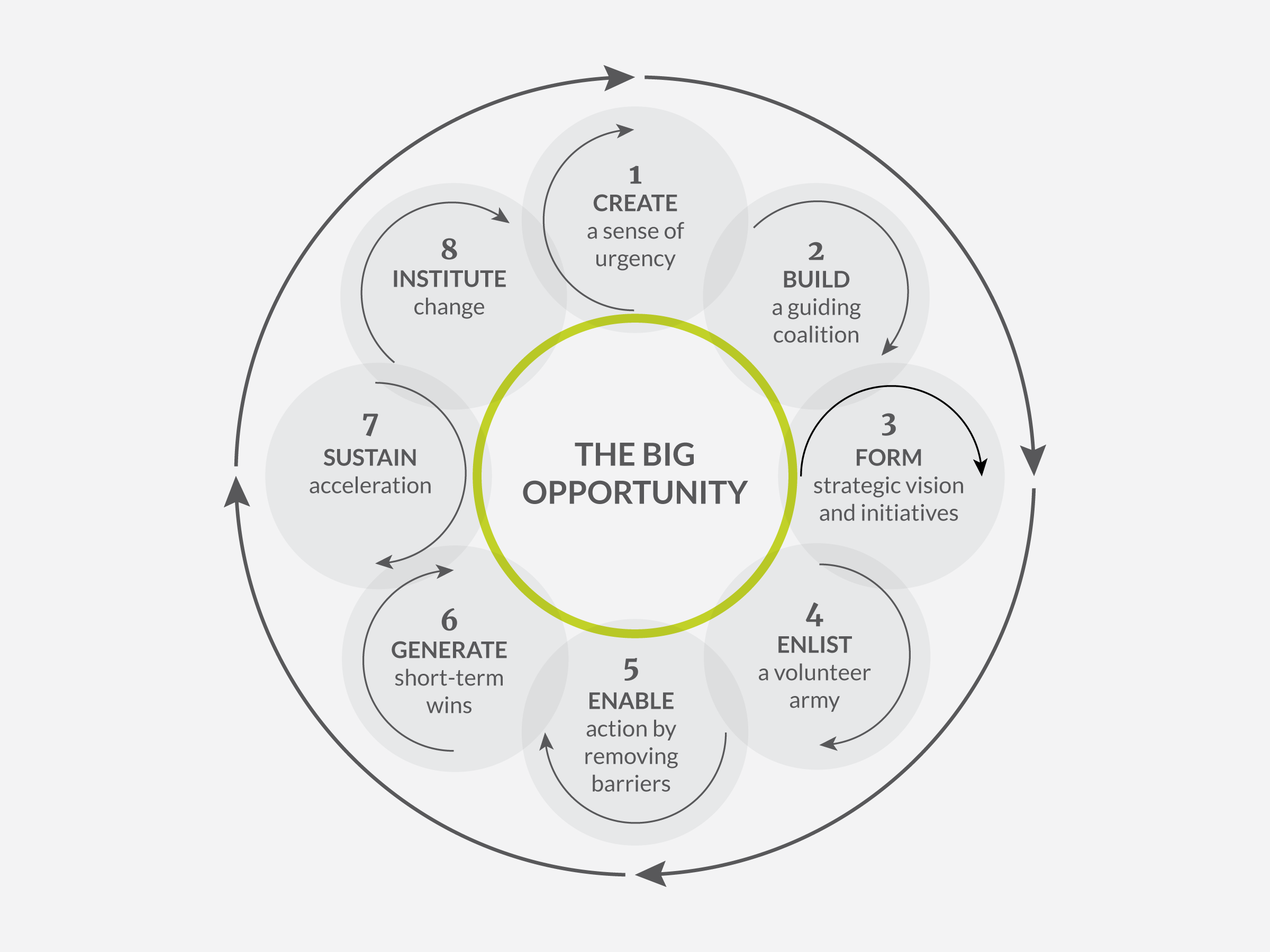Blog
Top Strategies to Motivate Your Leadership Team to Embrace Change
|

Blog
Top Strategies to Motivate Your Leadership Team to Embrace Change|

“Good leaders organize and align people around what the team needs to do. Great leaders motivate and inspire people with why they’re doing it. That’s purpose. And that’s the key to achieving something truly transformational.”
— Marillyn Hewson, Chairman, President and Chief Executive Officer of Lockheed Martin Corporation Marillyn Hewson
Prosci, in two decades of reporting, found that “active and visible executive sponsorship” is one of the top contributors to the success of change initiatives. “Though much has changed in the field of change management over the last two decades, the importance of the leader’s role in change has remained constant.”
Support from the leaders who champion change is essential to change management success. Sponsors — an organization’s executive and senior leaders — need strong communication to inspire and engage the leadership team. This proactive communication is challenging even under normal circumstances.
Effective change management strategies help sponsors motivate leadership and, by extension, employees to embrace change.
Start with The Big Opportunity
Leaders should focus on The Big Opportunity. Sponsors need to communicate the why, what and so what of the change. This message is the key to Kotter’s change management model. People resist change when they don’t understand why it’s happening. Sponsors counter resistance by proactively communicating The Big Opportunity.
Identifying this message requires three steps: learn, listen and agree. Learning starts with understanding your organization. Listening requires change leaders to seek input — from executive leadership teams and from representatives across the organization — to inform strategy development. Agreeing means creating alignment between the core and executive leadership team around The Big Opportunity.
Once you have alignment and support for The Big Opportunity, it’s time to move forward.
Follow an effective change management model
True change takes time. Without a process, change leaders can lose their way and end up missing the mark. Change leaders have a higher chance of success when using a tested change model.
Kotter’s change model is unique as it prioritizes people in the change process. Since people are the true drivers of change, this makes Kotter’s model a strong option for many organizations. It’s built around eight steps:
- Create a sense of urgency
- Build a guiding coalition
- Form strategic vision and initiatives
- Enlist a volunteer army
- Enable action by removing barriers
- Generate short-term wins
- Sustain acceleration
- Institute change
Kotter’s change management model helps an organization build support for the change and sustain the momentum throughout. However, Kotter’s model doesn’t address change management communication. We know that if humans are central to change, we need to communicate our expectations to them in ways that are clear and motivating.
Create and sustain change management communication
Communicating openly, clearly and consistently should be a core strategy in every organization, but it is crucial during change. How can sponsors keep communication at the forefront?
Change sponsors need to be engaged throughout change. One pitfall is that leaders are immersed ahead of the employee population. By the time employees are getting on board, leaders can become bored or focused on what’s next. This can cause leaders to abandon change communication too soon.
Sponsors should be communication role models — carrying change management communication strategies into day-to-day operations. Their unwavering commitment to communication serves as an example and helps cultures evolve and trust grow. When change leaders make consistent communication a priority, leadership teams will follow suit.
Without leader champions, change can’t happen
Leaders set the strategy and are responsible for achieving the goals of the change. When they resist, change doesn’t have a chance. Sponsors are responsible for communicating leaders’ role in the change. How can sponsors enable them to be successful change leaders?
Sponsors need to educate leadership on common change challenges and how to face them successfully. These challenges include leaders not understanding their roles, insufficient buy-in from communities and a failure to consistently communicate change. With foresight, sponsors can prepare their organizations to tackle these challenges.
Statistics show that 50% of change initiatives fail. Sponsors don’t need to accept these odds. By communicating The Big Opportunity, following a tested change management model and sustaining communication throughout the change, they ensure change sticks in their organizations.


